Frieze London
Stand C09
13–17 October 2021
Victoria Miro is delighted to participate in Frieze London (Stand C09) with a presentation that draws inspiration from depictions of trees and flowers and the multiple meanings and associations of botanical motifs.
Featuring works by Milton Avery, Hernan Bas, María Berrío, Inka Essenhigh, David Harrison, Alex Hartley, Secundino Hernández, Ilse D’Hollander, Chantal Joffe, Idris Khan, Yayoi Kusama, Doron Langberg, Chris Ofili, Celia Paul, Paula Rego, Tal R and Conrad Shawcross.
The presentation considers the seasonal, symbolic, mythological and transformative role that trees, flowers and plants play in our outer and inner lives. While some artists tackle the historical genres of landscape or still life, others take a more elemental view, channeling the rhythms, flows and patterns of the natural world.
Milton Avery
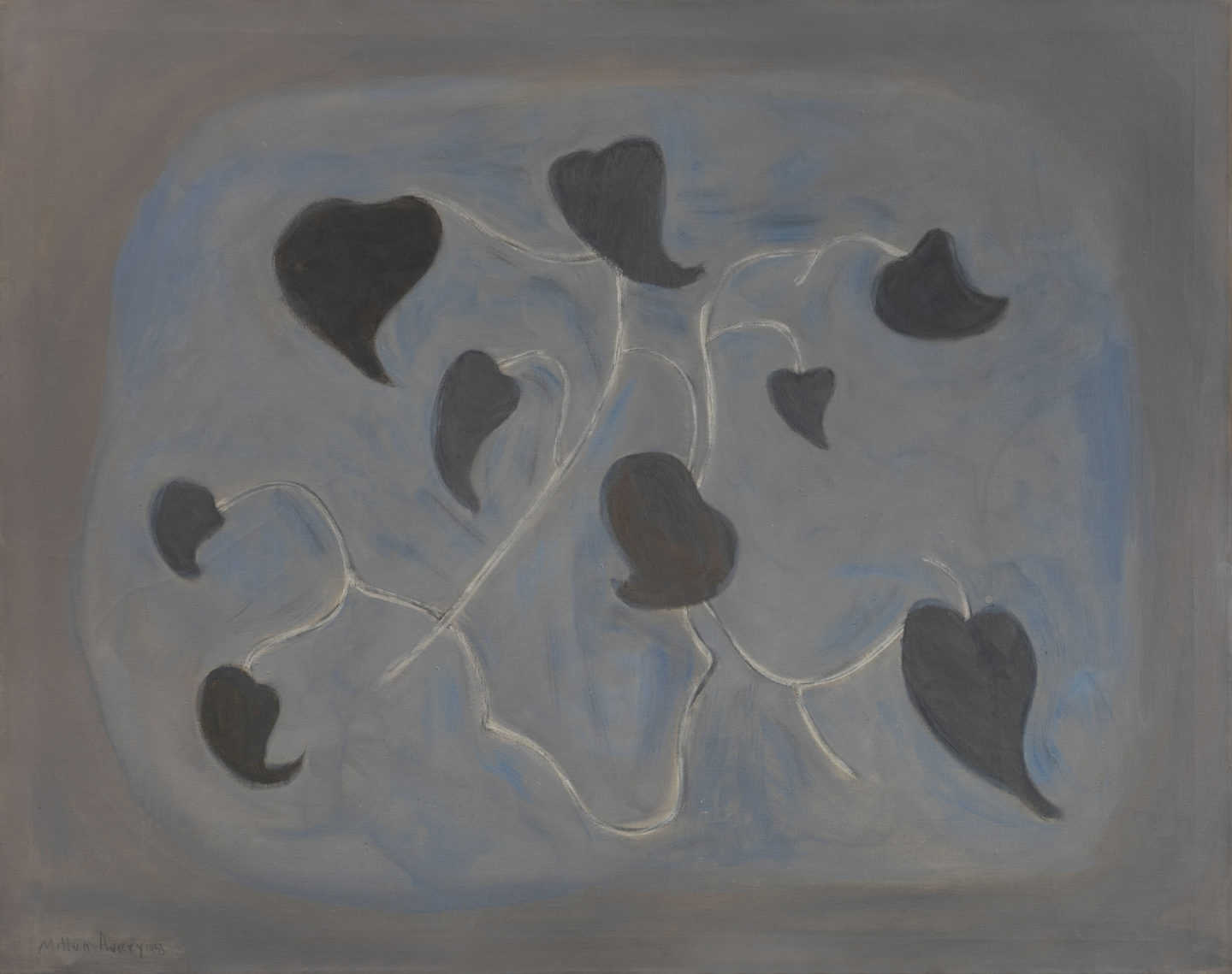
Oil on canvas
96.5 x 121.9 cm
38 x 48 in
Milton Avery, Vine, 1955
More infoStill life was a considerable part of Milton Avery’s practice from the 1920s onwards. It was a genre he approached seriously but often also with tenderness and humour. While many of his still lifes are formally, even traditionally, posed, it was not unique for Avery to depict a disembodied object, floating ambiguously against the merest hint of a window or tabletop. Vine, 1955, is almost musical in the dance of its leaf forms. Avery marries rhythmic form and chromatic harmony, the play of blue against grey creating a sense of movement on the surface of the painting that is further enhanced by the repeated leaf forms.
Hernan Bas
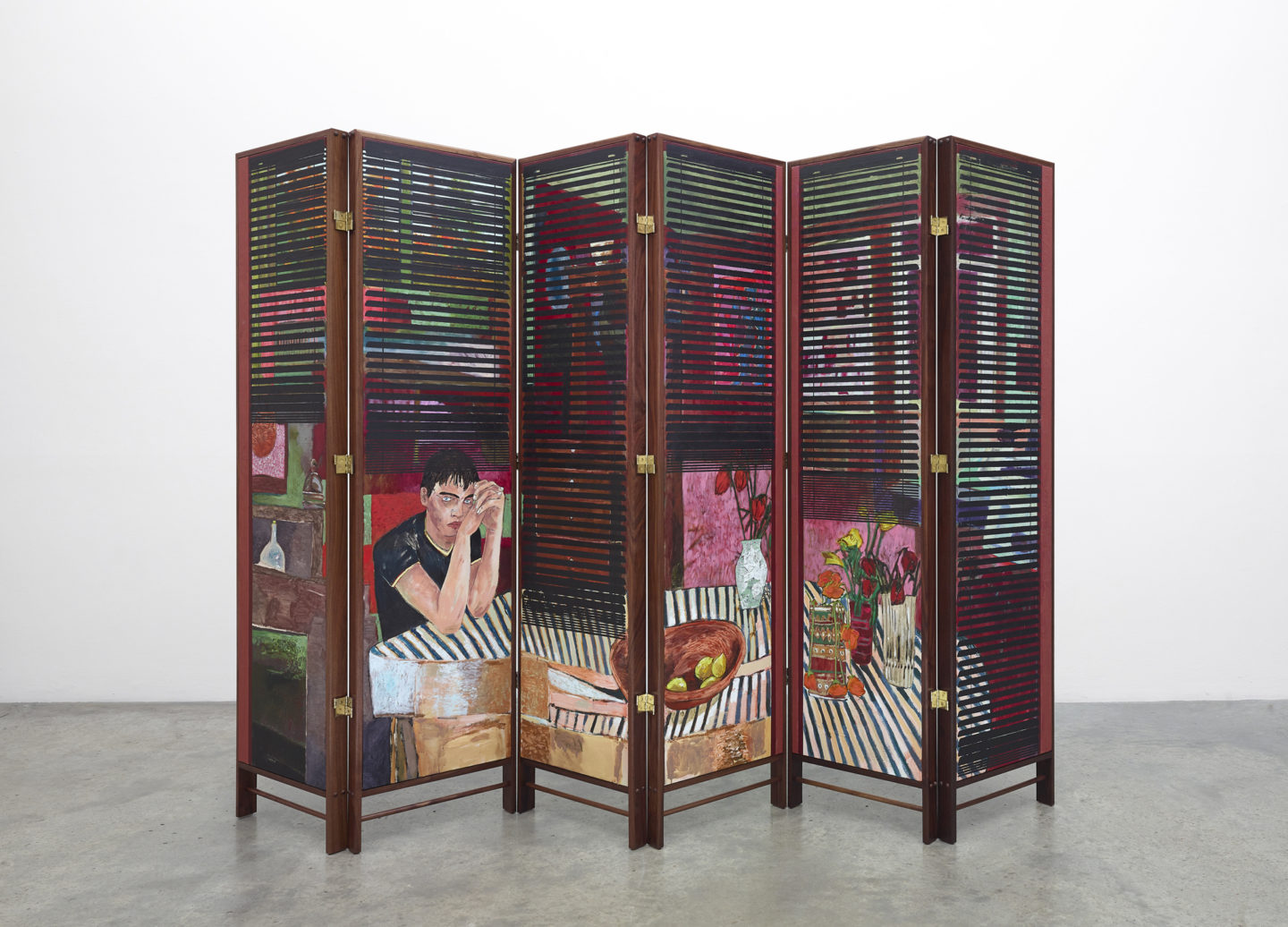
Six panel folding screen on linen mounted in a birch-wood frame
182.9 x 274.3 cm
72 x 108 in
Hernan Bas, A Private Morning, 2020
More infoHernan Bas’ A Private Morning, 2020, weaves characteristically expansive lines of enquiry around themes of privacy, mourning and seclusion, and the physical, emotional and symbolic conduits between the living and the dead. A folding screen, it is lined on one side with a classic black moiré fabric, a pattern produced since the Middle Ages but popularised by Queen Victoria during her ‘eternal mourning’ period following the death of Prince Albert. Replacing ‘mourning’ with ‘morning’, Bas invites viewers to observe a contemporary private moment, perhaps a period of seclusion as mourning is sometimes known, alluded to in the painted side of the screen, which depicts a lone male figure, wearing a black T-shirt and surrounded by flowers that, in various stages of decay, allude to symbolic depictions of flowers in historical still life and memento mori paintings.
María Berrío
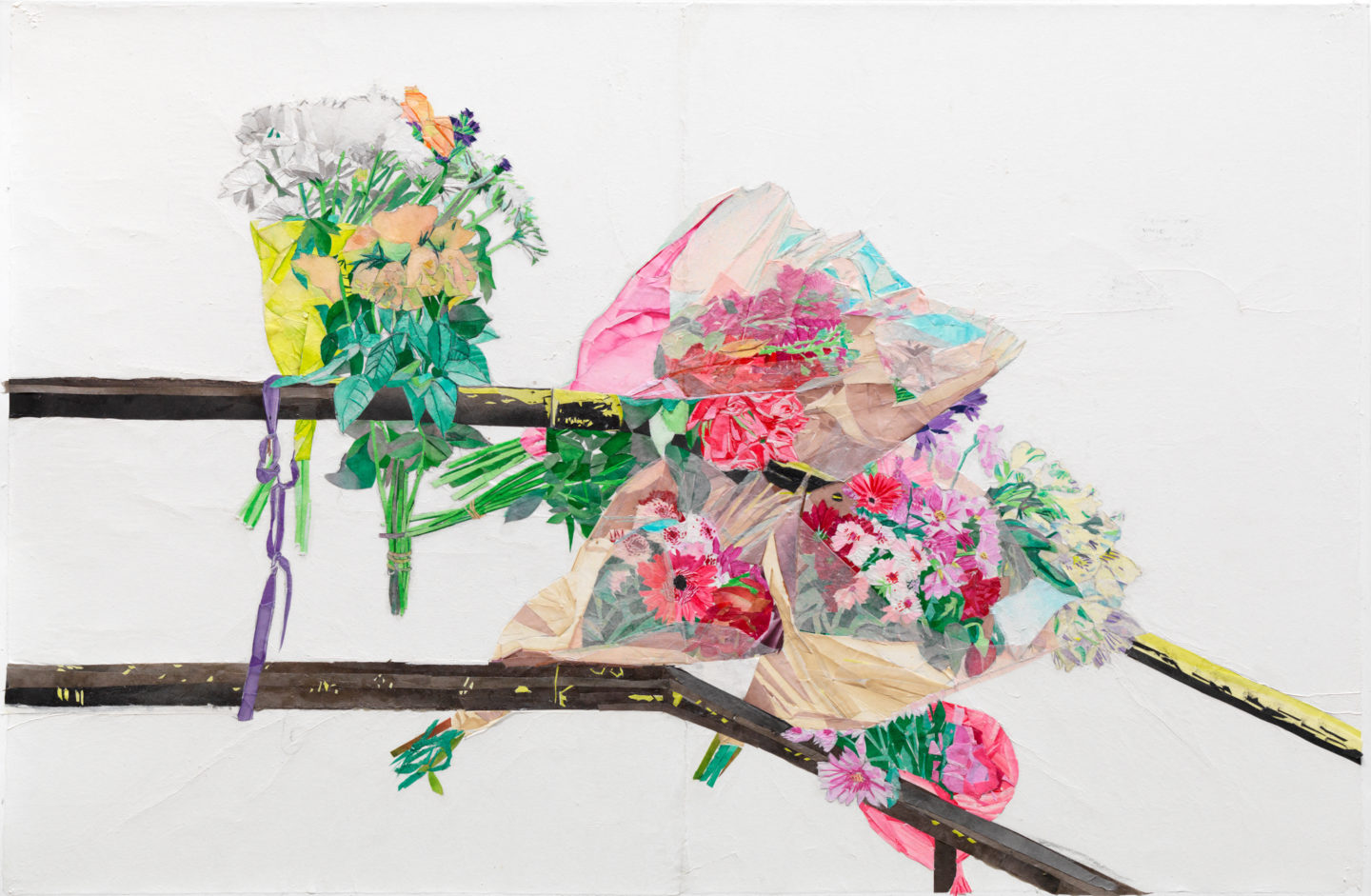
Collage with Japanese papers on linen
86.4 x 132.1 x 3.8 cm
34 1/8 x 52 1/8 x 1 1/2 in
María Berrío, Absence is a house so vast that inside you will pass through its walls and hang pictures on the air, 2021
More info‘The bouquets are an apt symbol for the transience of life, a brief flourishing of beauty that quickly fades.’ — María Berrío
Writing about the work on view, the Brooklyn-based artist says, ‘This work was made during one of the darker phases of the pandemic… For a brief period, I found that while my hands wanted to create, I had difficulty finding much meaning in anything I made. I started and stopped project after project until I returned to an image I had seen of memorial bouquets in London. They had piqued my interest, and on returning to New York I found myself photographing them whenever I encountered them on the street… It was here that I found something both delicate and intimate to portray this weight that myself and so many of us carried at that time. The bouquets are an apt symbol for the transience of life, a brief flourishing of beauty that quickly fades. Perhaps it was because of my desire to prolong that blossoming that I made this work, to capture that sudden flash in the darkness before it goes out as quickly as it emerged. By extending the life of those flowers by putting them on canvas, I imagined that I was in some way extending the memory itself of those that the flowers were used to commemorate.’
Inka Essenhigh
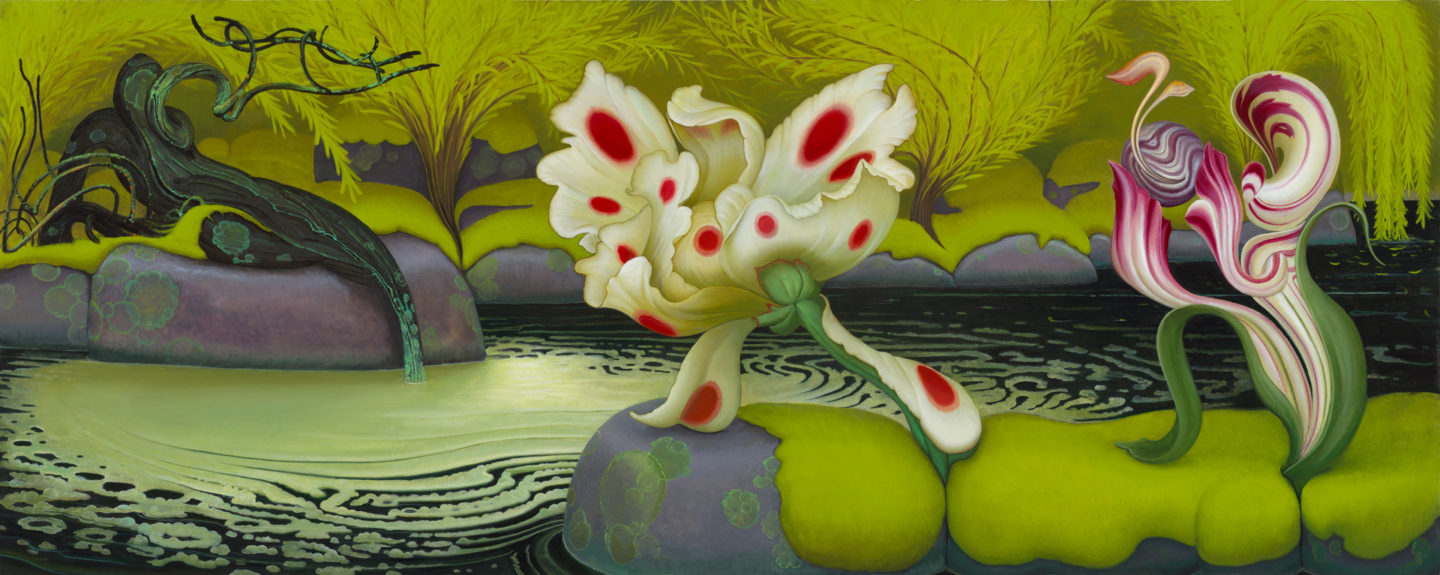
Enamel on semi rigid canvas
81.3 x 121.9 cm
32 1/8 x 48 in
Inka Essenhigh, Vernal Pool, 2021
More info‘They are based on real flowers because, no matter what I might come up with in my imagination, a real flower always tops it.’ — Inka Essenhigh
Inka Essenhigh makes paintings that meld an excessive exterior world with a quizzical, energetic interior consciousness. Whether painting human or other organisms, she builds finely wrought narratives that, at times tinged with symbolism, can be read as spirited visions of the here and now. This painting is drawn from her ongoing series of botanical works in enamel paint, a medium the artist first worked with two decades ago, in which flowers step forward, uprooted from landscape or still life traditions, to become outlandish and feisty protagonists in their own right. The artist has described wanting to paint ‘what was unseen, to find the life within things and animate them.’ Based in nature, these works nonetheless reference the fantastical as a means of channeling invisible energies that, whether we think of them as scientific or mystical, pulse through our surroundings.
David Harrison
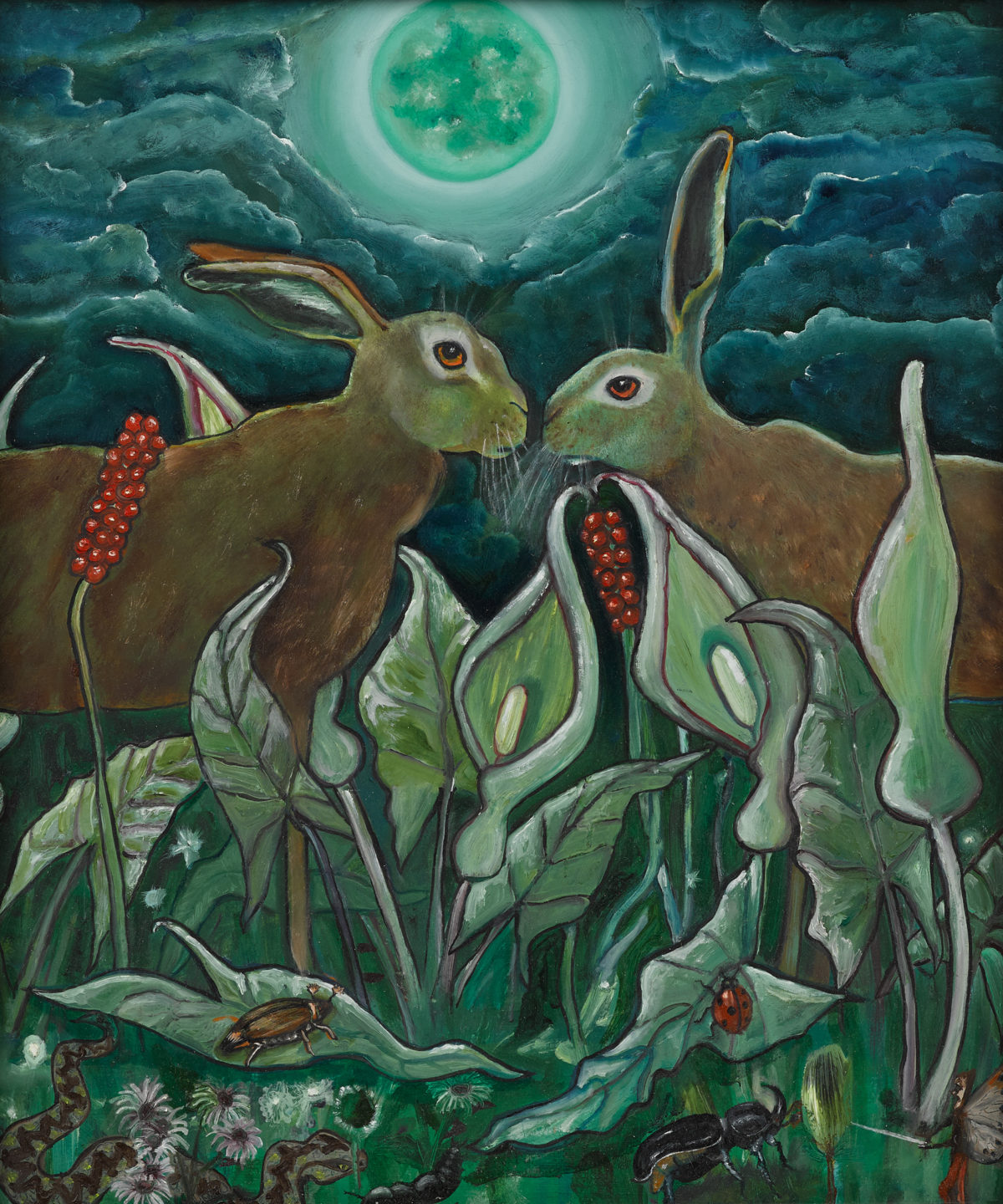
Oil on board
50 x 42 cm
19 3/4 x 16 1/2 in
David Harrison, Chance Meeting, 2021
More infoDavid Harrison’s paintings present a world where the natural and supernatural go hand in hand. Works such as Chance Meeting, 2021, give shape to a complete imaginative universe akin to those of earlier Romantic visionaries, ripe with references to the natural world and populated by a cast of animals and figures drawn from myths, legends, modern-day politics and from his own biography alike. Often in his work, while human presence is revealed to be ignorant, frivolous, or destructive, animal and plant life represents good sense and eternal knowledge.
Alex Hartley
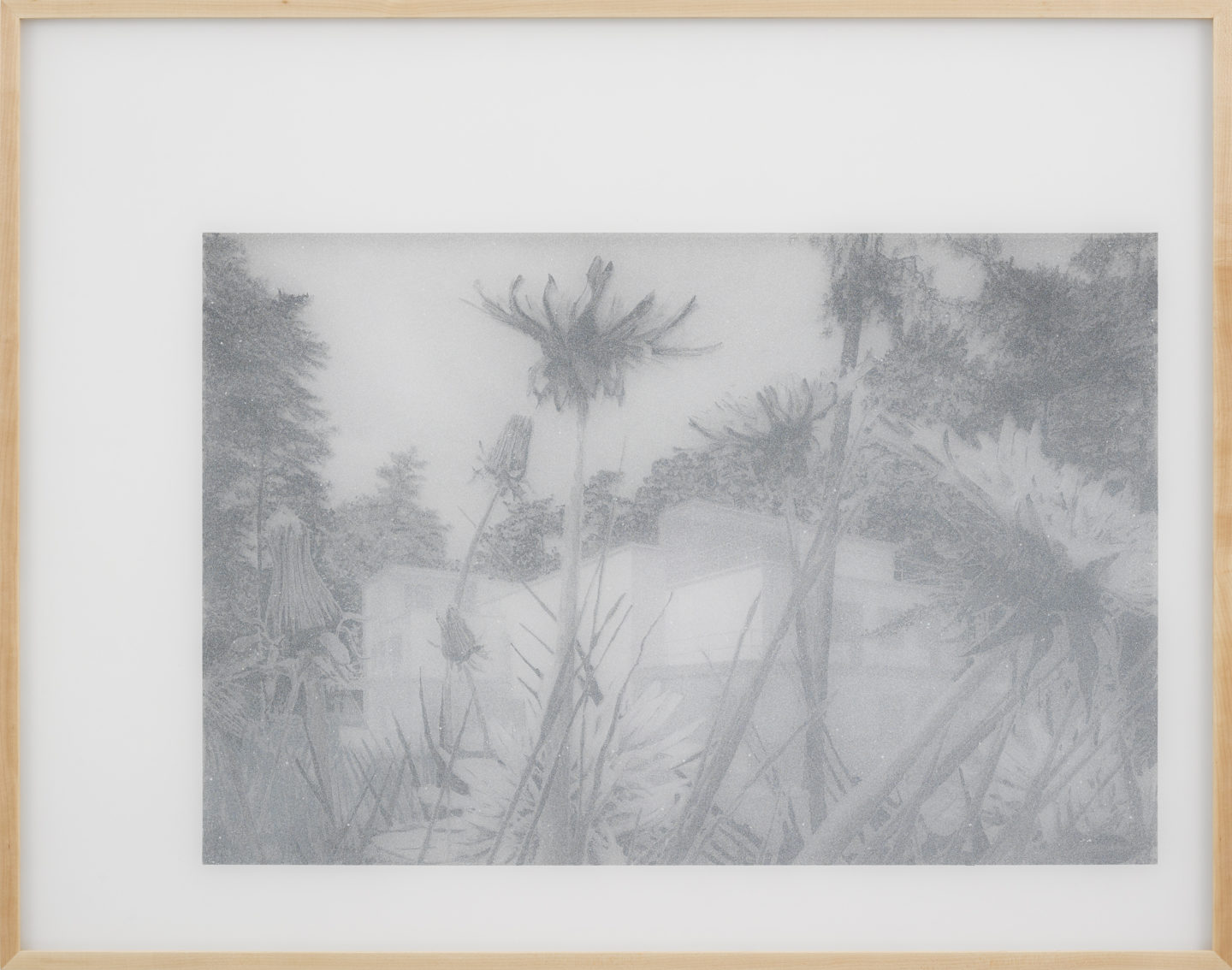
Plexi glass, acrylic paint, C-type photographic print on Fuji paper
95.5 x 122.5 x 6.2 cm
37 5/8 x 48 1/4 x 2 1/2 in
Alex Hartley, The Master’s House, 2021
More info‘The passing of time is alluded to through my addition of accelerated and untamed nature.’ — Alex Hartley
This work follows on from Alex Hartley’s acclaimed series The Houses, in which he brings together photographic and painterly elements to examine the idea of the viewpoint, the frame and the boundary – between interior and exterior, manmade and natural environments, public and private space. Iconic examples of modernist domestic architecture, photographed by the artist over the past twenty-five years, form the basis of these atmospheric works, in which the photographic image and hand-painted elements – often embellishing or exaggerating a verdant landscape – create a mysterious sense of depth. For Hartley, a sense of narrative is key. He explains, ‘These houses (often recognised as icons and listed accordingly) are kept in frozen preserved perfection, more akin to a museum object than a dwelling. The passing of time is alluded to through my addition of accelerated and untamed nature… It’s all about the tension of that, and what that tension gives rise to.’
Secundino Hernández
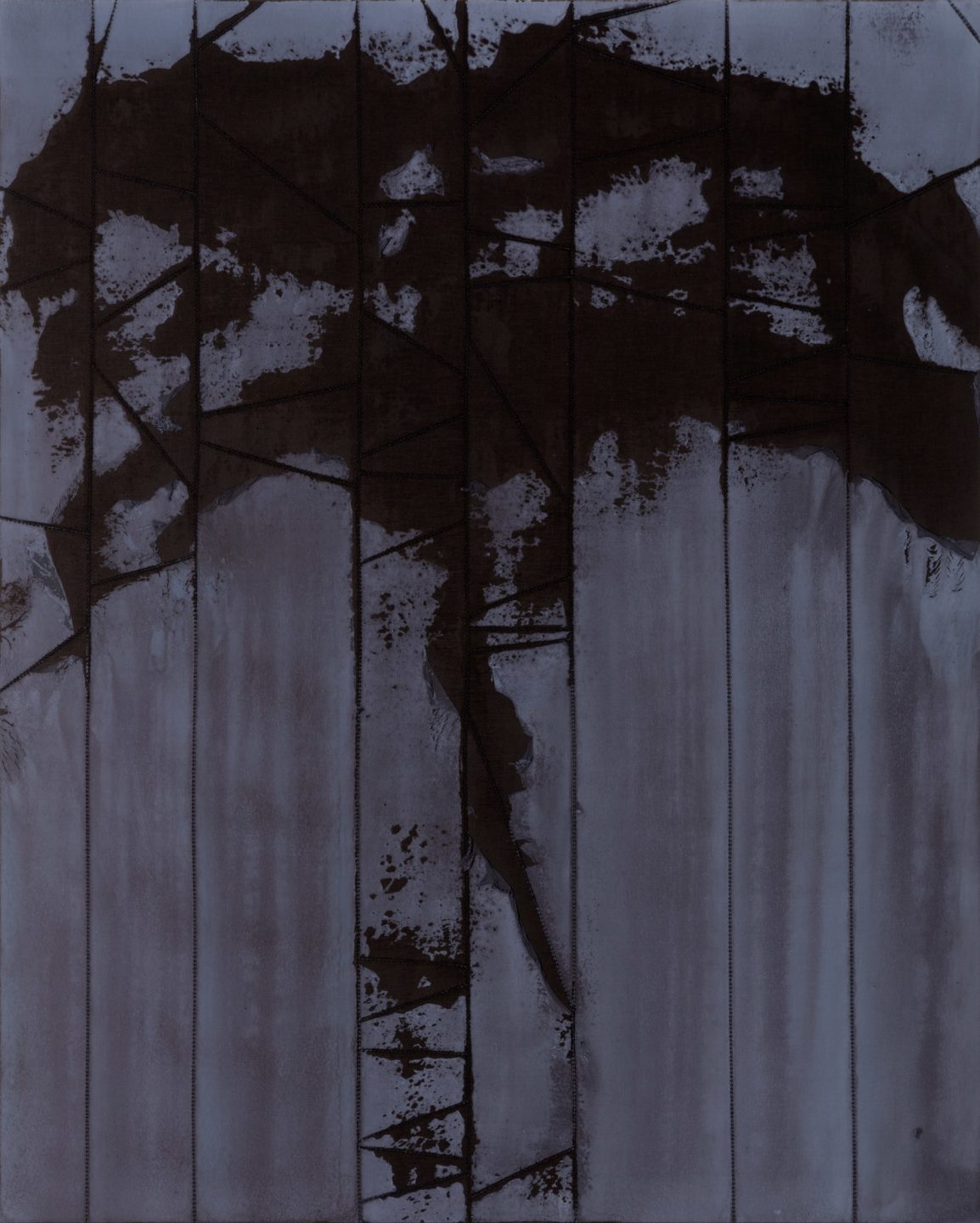
Stitching and dye on linen
178.5 x 143.5 cm
70 1/4 x 56 1/2 in
Secundino Hernández, Untitled, 2021
More info‘The form of the palm tree allows me to move between the most representative and the most abstract part of painting, which really fascinates me.’ — Secundino Hernández
Secundino Hernández corrals diverse influences within a signature language, often collapsing traditional distinctions and hierarchies. In his hands, a monochrome might also be an action painting, while an action painting might, on closer inspection, reveal itself to be an almost archaeological excavation of the picture plane. In this work the artist takes the form of a palm tree, which he encounters everywhere in his native Madrid, as a motif that, through processes of stitching, painting and washing, lays bare the exploratory nature of the artist’s practice and its dance between figuration and abstraction, construction and deconstruction, positive and negative space, spontaneity and control.
Ilse D’Hollander
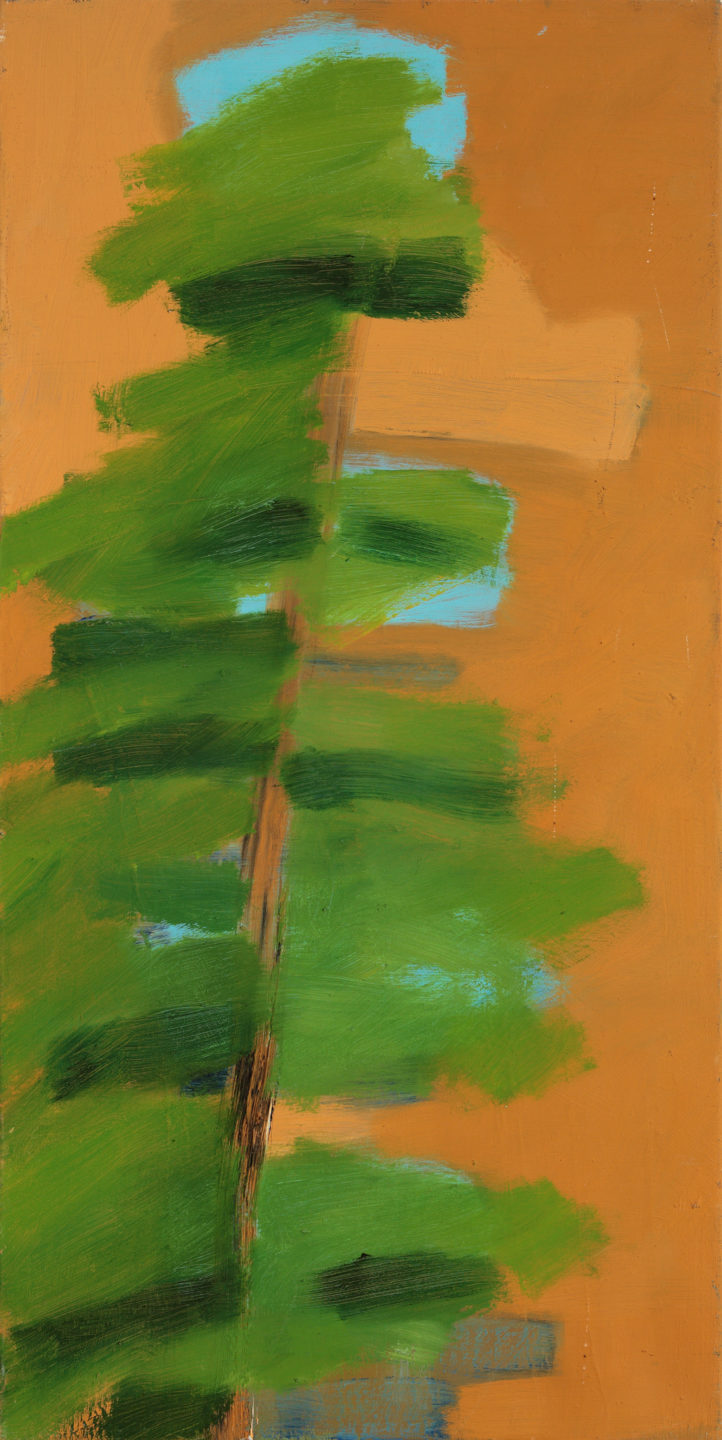
Untitled, 1992
Oil on canvas
60 x 30 cm
23 5/8 x 11 3/4 in
Ilse D’Hollander, Untitled, 1992
More infoWith a keen awareness of gesture, colour and surface, and ever-mindful of art historical sources, Ilse D’Hollander (1968–1997) created paintings and works on paper that are characterised by a sense of stillness and muted luminosity. Throughout D’Hollander’s short career, there are examples of more recognisably figurative works in addition to the ostensibly abstract evocations of place, light and weather for which she is best known. As noted by Jean-Charles Vergne, director of FRAC Auvergne, ‘It would be a mistake to regard [her] oeuvre as split into two distinct practices, with a cleavage between figuration and abstraction… The reality is more subtle… in D’Hollander’s artwork, which is uniquely about painting and the problems painting raises and the solutions that turn up when experimenting with various pathways.’
Chantal Joffe
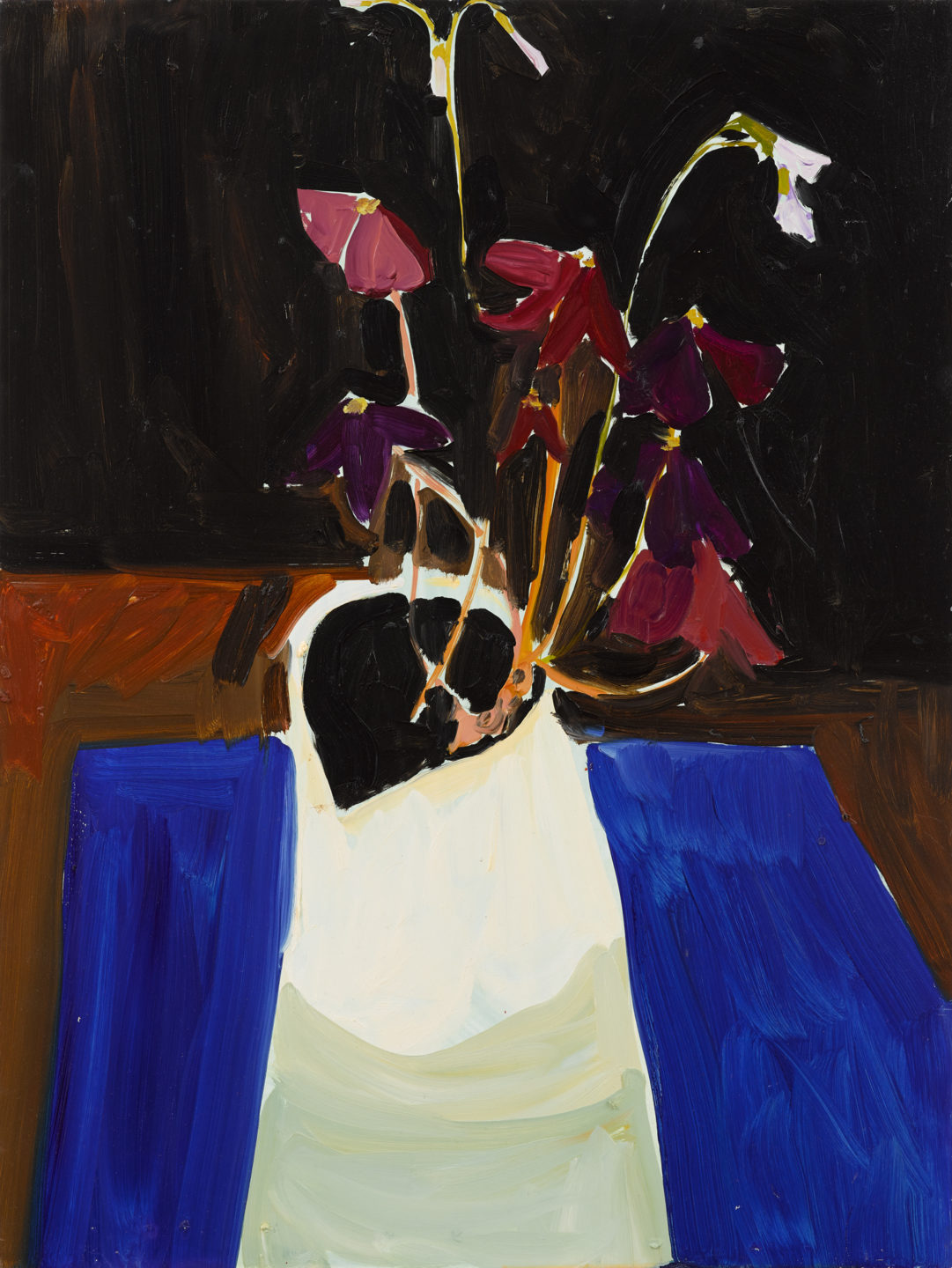
Oil on board
60.9 x 45.7 cm
24 x 18 in
Chantal Joffe, Corona Flower at Night 2, 2021
More info‘I’ve been painting these weird flowers… for me they became a symbol of lockdown. They’re quite post-apocalyptic.’ — Chantal Joffe
Corona Flower at Night 2, 2021, is one of a number of paintings made by Chantal Joffe during the recent lockdown. Speaking about these works in conversation with Charlie Porter as part of the publication for her 2020 Arnolfini exhibition, For Esme – with Love and Squalor, the artist has commented, ‘In the life I used to have, I would be in the studio at quarter to nine every day… Then I would have the whole day to paint… Now it’s very different, I can drift in and out, paint at night, pick it up and drop it and drift. I’ve been painting these weird flowers. They’re like a very dark clover, and for me they became a weird symbol of lockdown. They’re quite post-apocalyptic. I keep going back to them. They’re gripping to me. I like that, when you force yourself against the grain of something.’
Idris Khan
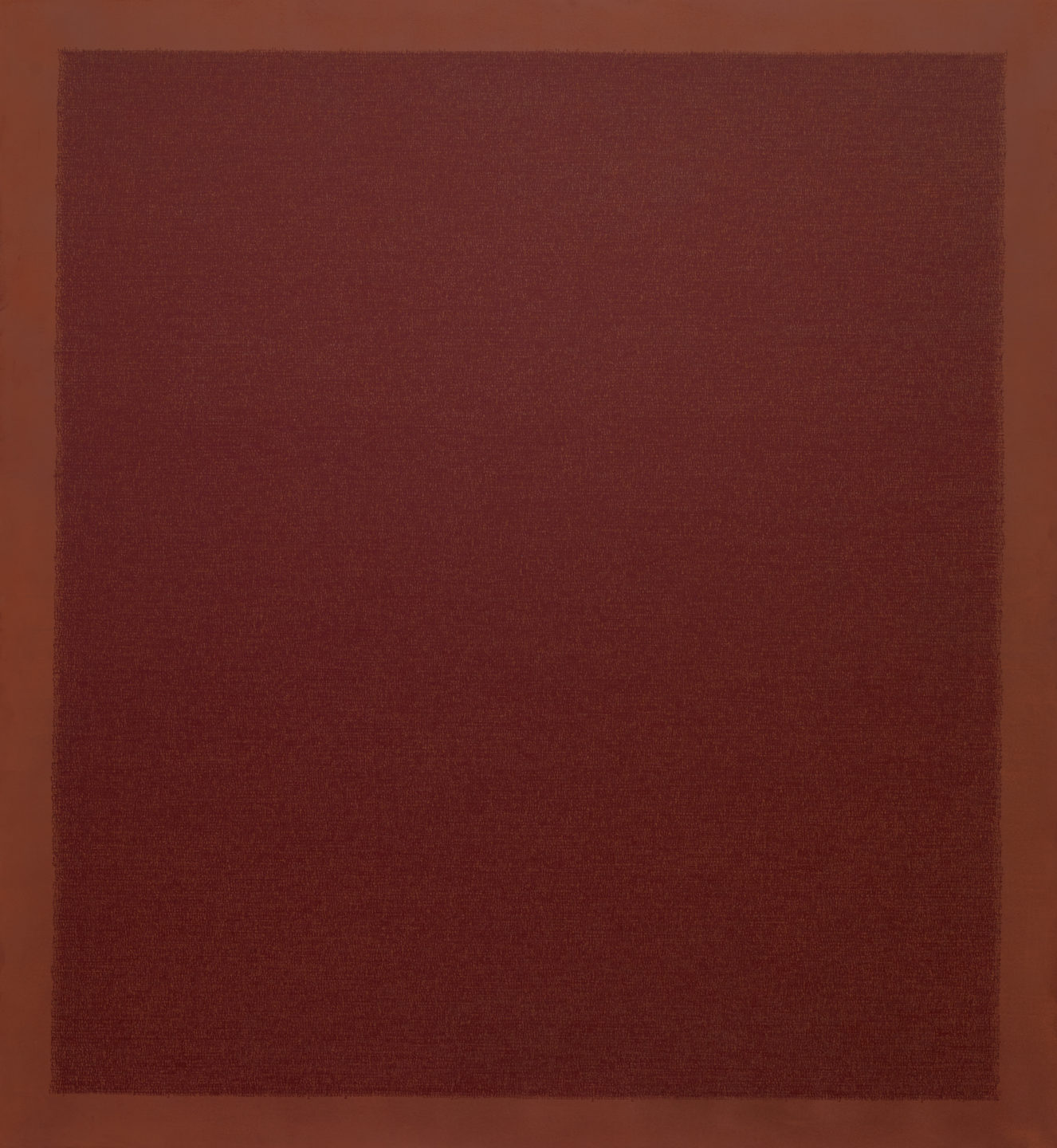
Oil based ink on gesso, on aluminium
141 x 130 cm
55 1/2 x 51 1/8 in
Idris Khan, The Rhythms of life, interrupted, 2021
More info‘What’s left is an abstract painting of internalised thoughts.’ — Idris Khan
The Rhythms of life, interrupted, 2021, is a new painting by the artist, among the first completed in a palette of burnished copper-red that incorporates pigments of burnt sienna and iron oxide red, which relates to the colours of autumn.
The painting on view is a colour progression from Khan’s celebrated blue paintings. Gaining knowledge from the colours of his acclaimed series The Seasons Turn, Khan has begun to experiment with different hues for his backgrounds. He has often drawn inspiration from key philosophical and theological texts in his work, yet increasingly his own writings have become a conduit for investigating time, memory, creativity and the layering of experience. This new work incorporates passages of texts in which Khan expresses thoughts and feelings in response to the philosophy of interruptions in the repetitious nature of our daily lives – interceptions that can bring us back to the present.
Speaking about the work, the artist says, ‘I like the perception of seeing the painting from a distance. It looks like a block of colour, and as you get closer you see the words being revealed. Gesso is a very absorbent surface, so the first layer sinks into it, almost freezing the words in time. And then as I layer, the language is eradicated. Often people ask me what’s written, but in the end it doesn’t matter. The words are there at the start of the process, but as I make the paintings, the words lose their meaning, and what’s left is an abstract painting of internalised thoughts.’
For this year’s Frieze, Khan has collaborated with Deutsche Bank and will present an installation of his work in the Frieze London Lounge. He has also curated and selected work from the DB collection for the Frieze Masters Wealth Management Lounge. For the inaugural exhibition of Deutsche Bank’s recently opened headquarters in New York, the artist was commissioned to create four new monumental paintings entitled The Seasons, opening 20 October 2021.
Yayoi Kusama
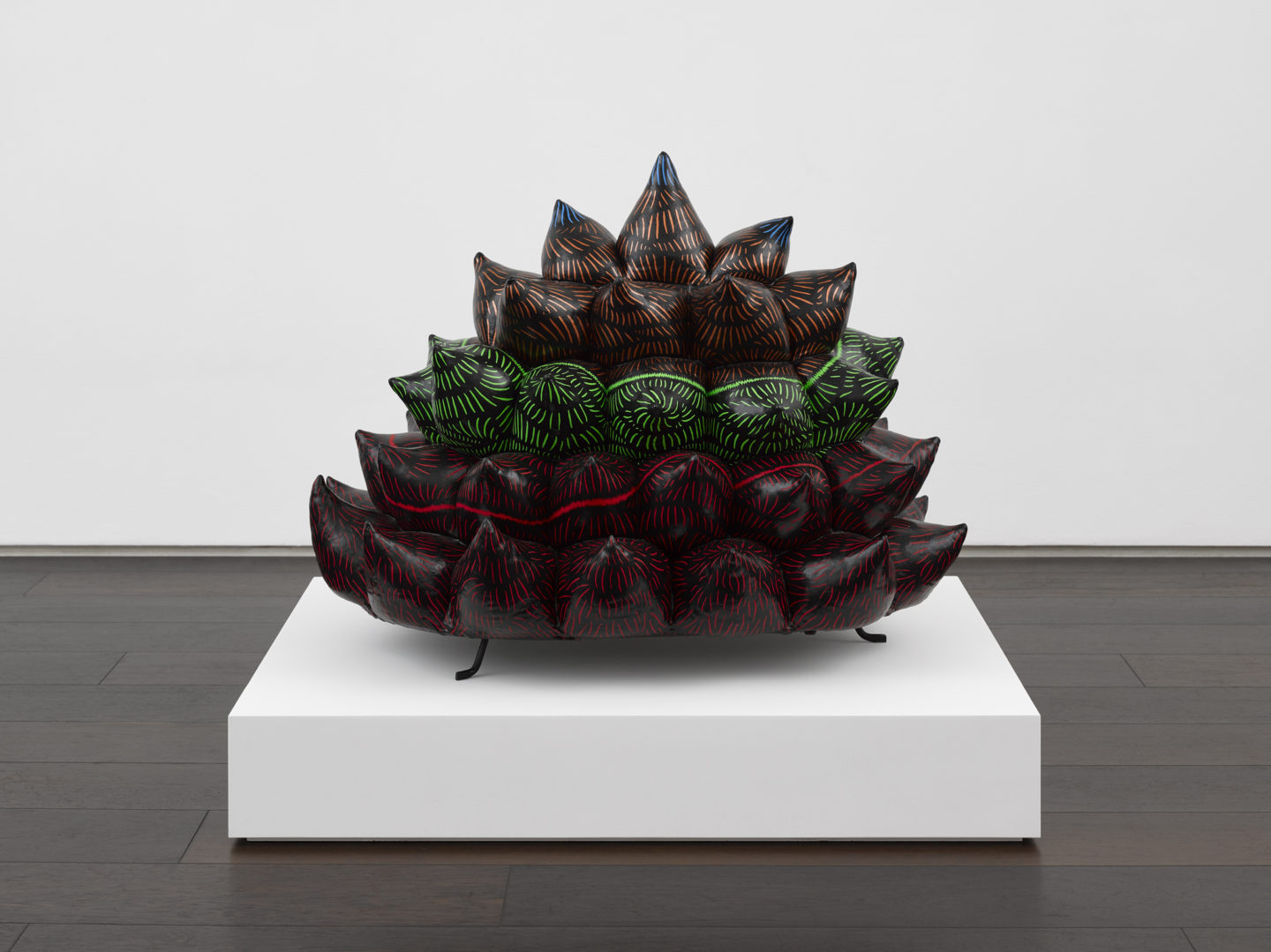
Stuffed cotton, metal and acrylic paint
65 x 63 x 83 cm
25 5/8 x 24 3/4 x 32 5/8 in
Yayoi Kusama, Seeking Undying Love, 2020
More infoSeeking Undying Love, 2020, is painted in the style that has come to characterise Kusama’s iconic My Eternal Soul paintings and appears as though the artist’s signature stylistic marks have been released from canvas and organised themselves into three-dimensional form.
Soft sculptures have been a key tenet of Kusama’s oeuvre since the early 1960s, pre-empting many famous examples from that decade and inspiring many others subsequently. Writing about the genesis of this aspect of her practice Kusama explains, ‘From around 1961 something new appeared in the world of my art. It came to be known as “soft sculpture”. The nets I was painting had continued to proliferate until they had spread beyond the canvas to cover the tables, the floor, the chairs, and the walls. The result of the unlimited development of this obsessional art was that I was able to shed my painter’s skin and metamorphose into an environmental sculptor. I went on finding new ways to turn my obsessions into concrete forms.’
Doron Langberg
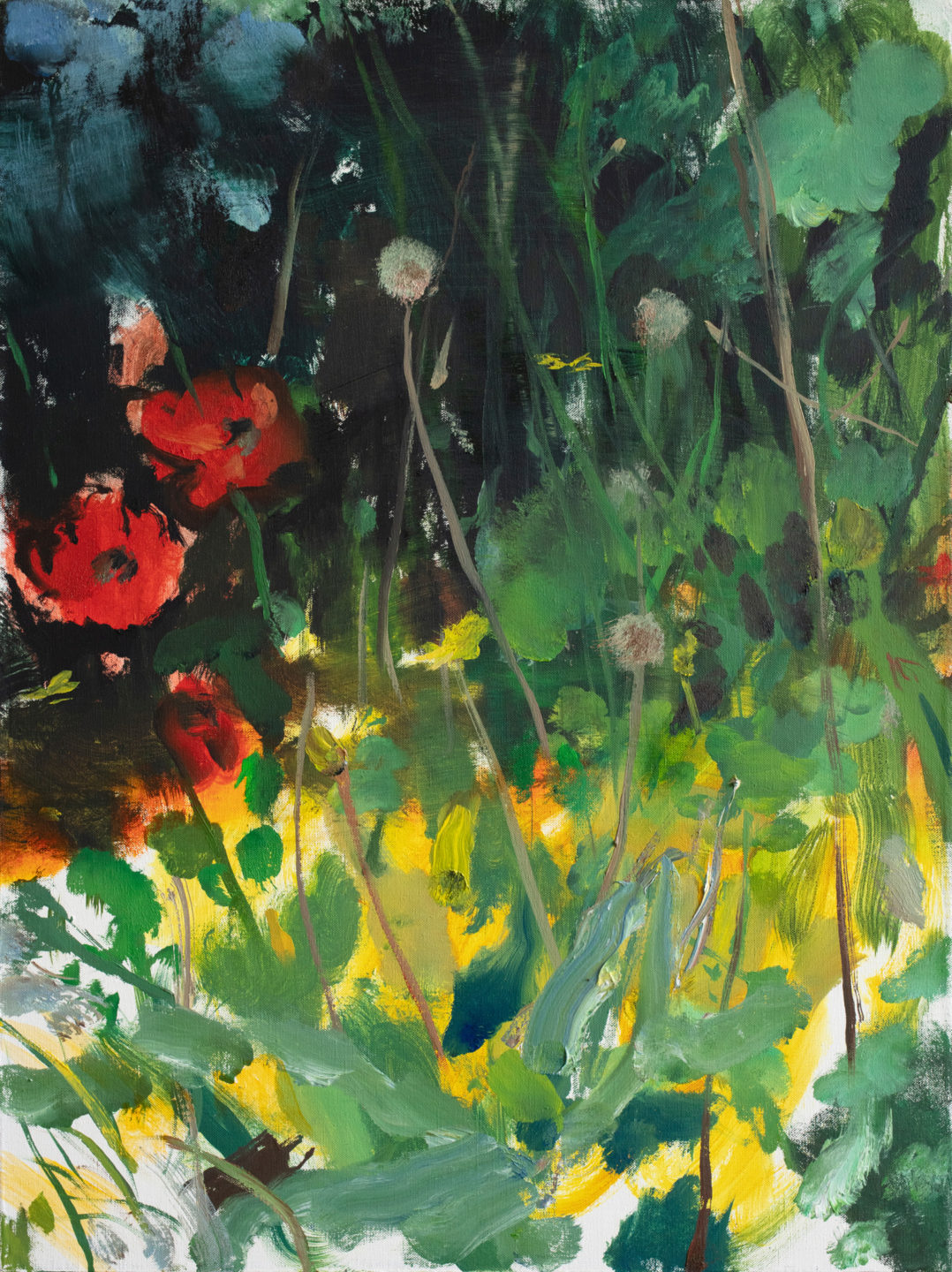
Oil on linen
61 x 45.7 cm
24 1/8 x 18 in
Doron Langberg, Anemones and Ragworts, 2021
More info‘Painting them felt like painting a friend, and my motivation was the same – capturing a specificity that comes from familiarity and love.’ — Doron Langberg
Recent flower paintings by Doron Langberg stem from a trip home to visit his family in Israel, where he had been unable to visit for more than a year. Speaking about these works the artist says, ‘My longing for the people I love and to “be home”, an experience with many layers, made otherwise everyday moments feel full of meaning. My family lives on the foothills of the Menashe mountains in the north of Israel, and coming back right for spring, so many wild flowers were in bloom. Painting them felt like painting a friend, and my motivation was the same – capturing a specificity that comes from familiarity and love.’
Chris Ofili

Watercolour, pastel, gold leaf, ink and charcoal on paper
38.7 x 25.9 cm
15 1/4 x 10 1/4 in
Chris Ofili, Afternoon with La Soufrière (prelude 2), 2021
More infoOver recent years, in paintings and works on paper, Chris Ofili represents the myth of the satyr, repositioning his subject away from the conventional depictions of wild, Dionysian conduct with sensitive representations that evoke passion through compositions combining strong graphic lines, lush, kaleidoscopic colours and gold leaf. Afternoon with La Soufrière (prelude 2), 2021, refers to the volcano on Saint Vincent, which erupted in the Caribbean earlier this year, and to the Stéphane Mallarmé poem The Afternoon of a Faun, a dream-like monologue of languorous eroticism, which inspired Debussy’s symphonic poem for orchestra, Prélude à l’après-midi d’un faune.
Celia Paul
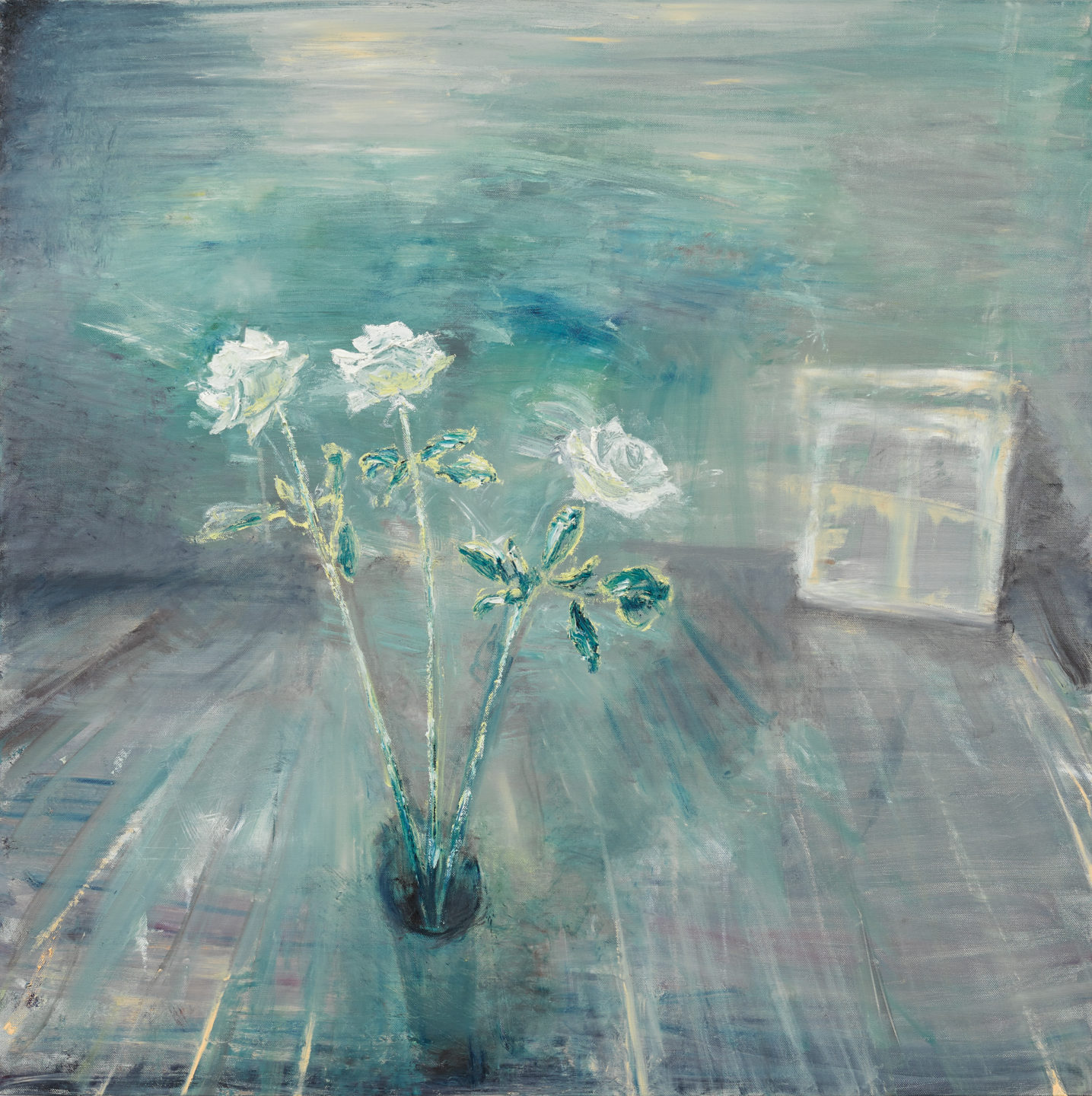
Oil on canvas
142.5 x 143
56 1/10 x 56 3/10
Celia Paul, Roses and Canvases (for Gwen John), 2021
More info‘I decided to paint the roses on a large scale to show the power of intimacy as a subject for art.’ — Celia Paul
Celia Paul’s art is founded on deep connections – familial, creative, looping back and forth across time. Writing about Roses and Canvases (for Gwen John), the artist comments, ‘I have been thinking a lot about Gwen John – about how her art powerfully conveys intimacy and peace. I would like my art to do the same. I thought of her flower paintings. The most peaceful flowers are white roses.’
Paula Rego
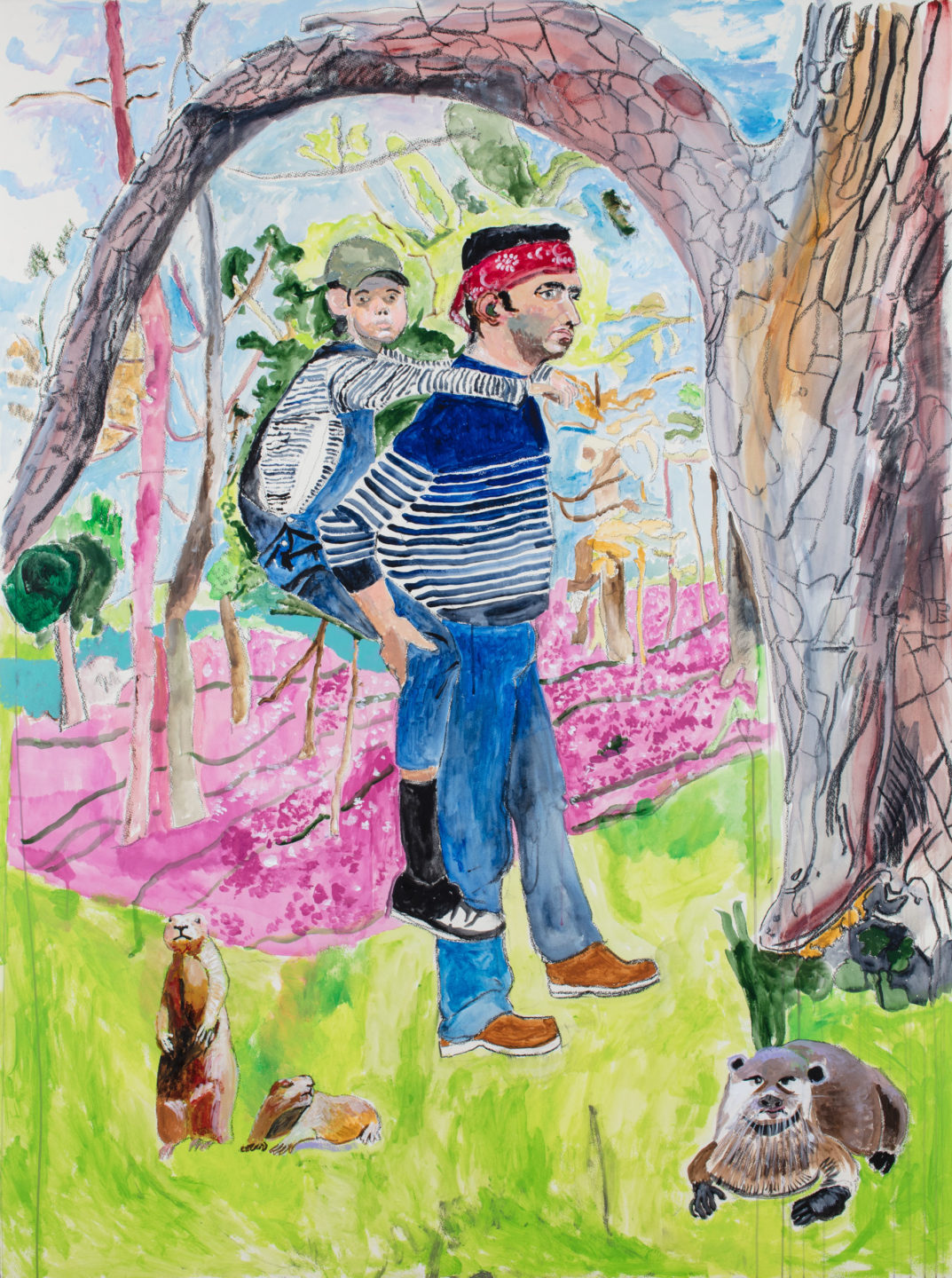
Acrylic paint and pastel on paper on aluminium
160 x 120 cm
63 x 47 1/4 in
Paula Rego, Across the Forest, 2017
More infoPaula Rego’s Across the Forest, 2017, is one of a series of works inspired by Bastardia, a 2005 story by the celebrated Portuguese novelist, playwright and poet Hélia Correia. In Correia’s fateful tale, a boy who believes his father is the sea makes a journey to the ocean, which he has never seen before, experiencing a number of encounters and hardships along the way. In this work, the penultimate in the series, teeming with flora and fauna, Rego reminds us of the setting of the forest and the narrative of the search or quest in mythology and folklore. As Deryn Rees-Jones comments in Paula Rego: The Art of Story, ‘… Telemachus searching for Odysseus in the underworld; Aeneas carrying his father out of a burning Troy at the end of the war. Unexpectedly, given Rego’s lifetime exploring relationships through women’s lives and bodies, male vulnerabilities and bonds are placed very much at the centre of the series.’
Tal R
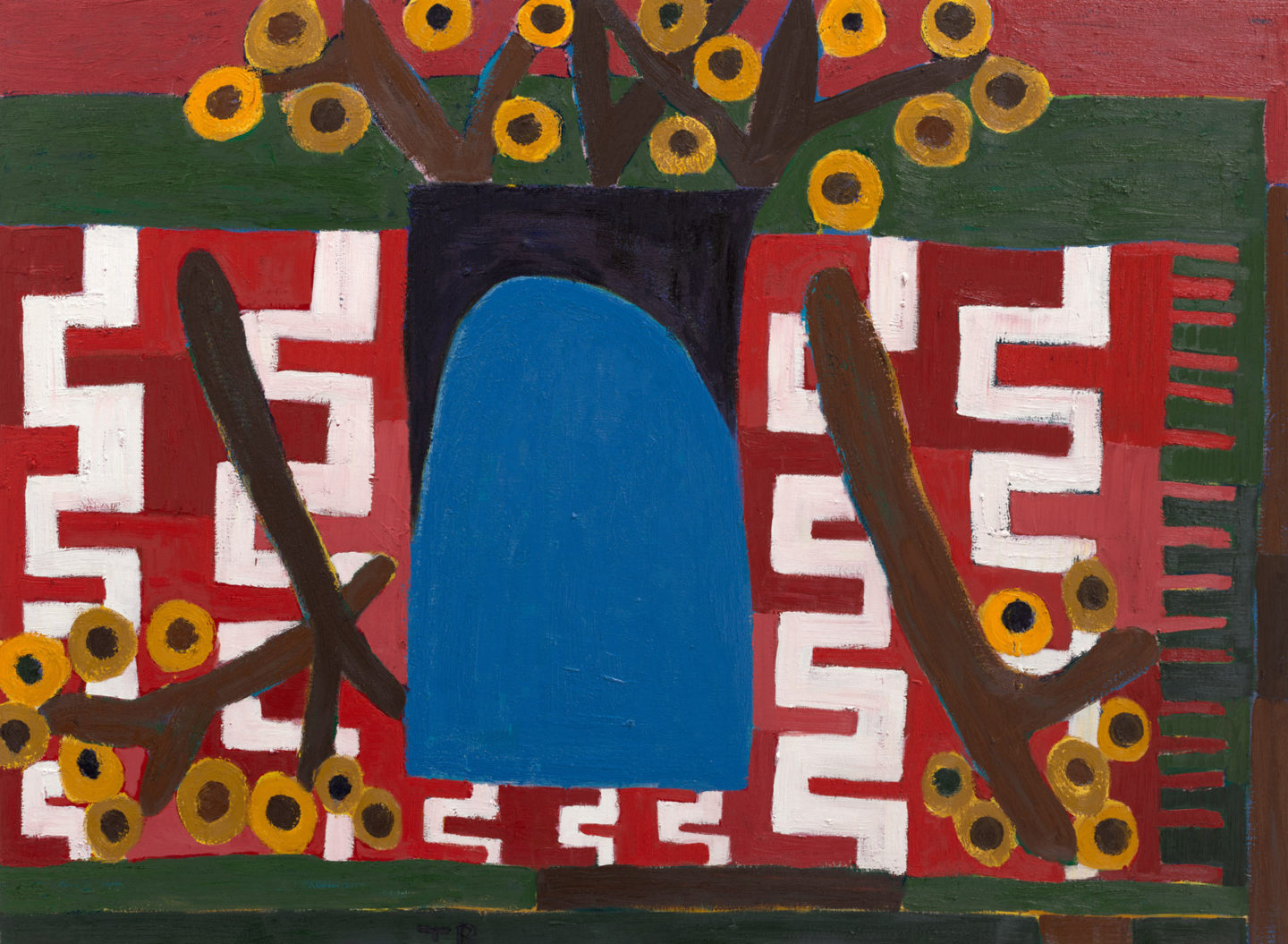
Oil on canvas
127 x 173 cm
50 x 68 1/8 in
Tal R, Untitled Flowers, 2021
More info‘It’s what I call “painter’s mathematics”… about how a flower goes down in the vase… all these amazing possibilities… And since I’m dealing with a completely flat world, I have to get the viewer into it, on to this dance floor of the three dimensional that doesn’t exist.’ — Tal R
Painted during the pandemic, Untitled Flowers, 2021, is one of a number of works united by subject matter that seem to foreground a domestic sphere that might serve to define the limits of our recent lives. Each depicts a bunch of flowers picked by the artist from around his home in the Danish countryside, presented in a vase on a table top within a closely cropped interior space. Flowers in vases are, of course, a kind of contained beauty, a domesticated wildness, nature tamed, and in this context they, perhaps unavoidably, can be considered as memento mori, a poetic reminder that our time is fleeting. The artist would always prefer to talk about his work in terms of what he defines as ‘painter’s mathematics’ – for example, how a stem goes into a vase, or hits the water. And yet, as he concedes, ‘I think if you talk to a mathematician very late at night, he would say mathematics is very emotional. It’s actually a way of way of organising the world. And I’m also into that. I’m trying to organise things that have too many details.’
Conrad Shawcross
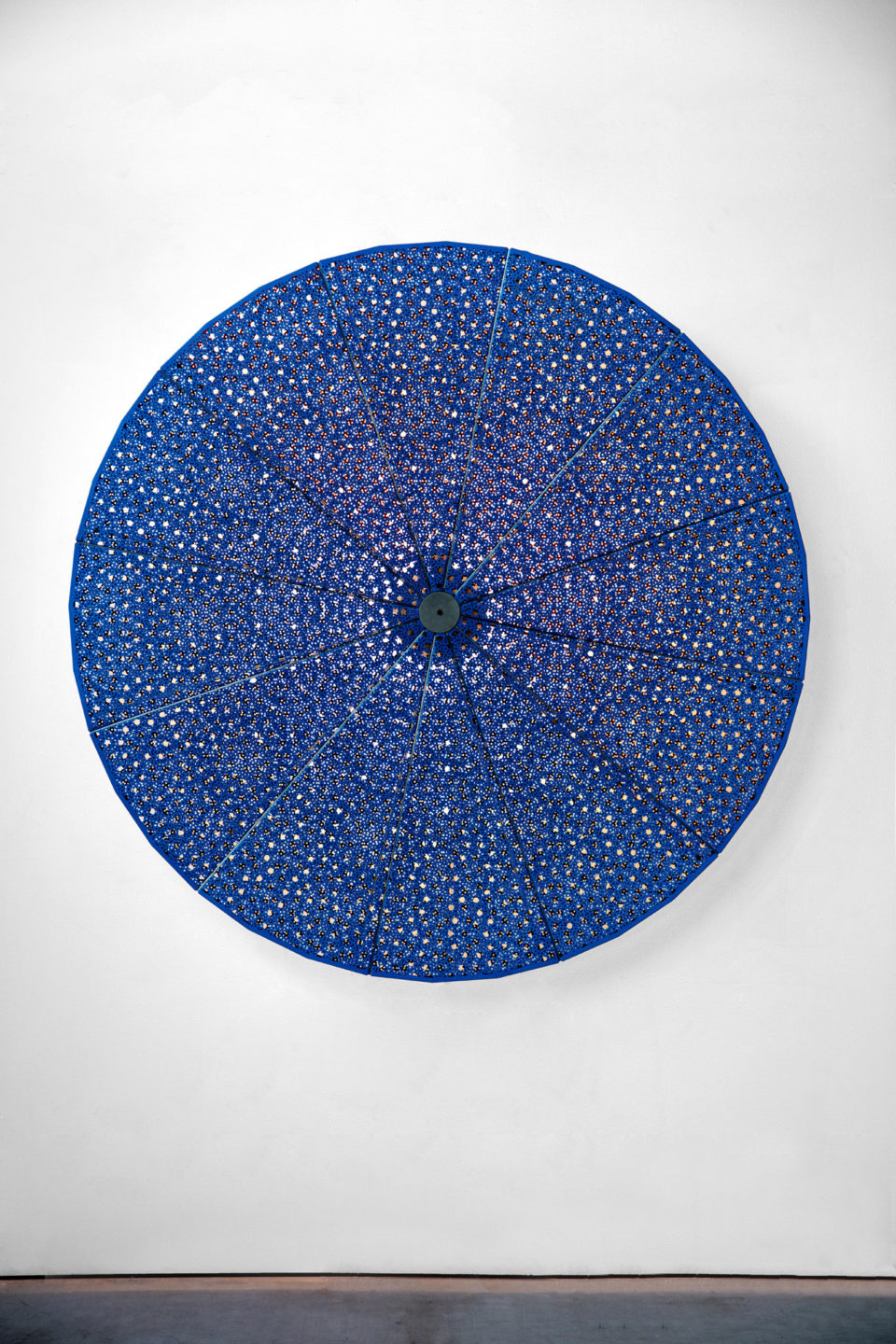
Painted steel
150 x 150 x 14 cm
59 3/50 x 59 3/50 x 5 51/100 in
Conrad Shawcross, Patterns of Absence “E’’, 2021
More info‘As each viewer gazes upon the shifting surface, strange patterns seem to appear and vanish, new thoughts are triggered and memories recollected all while neural pathways and connections are forged for the first time.’ — Conrad Shawcross
Made for Frieze London to coincide with the recent launch of the public commission Beacons, this new wall-based work, entitled Patterns of Absence (E), continues the artist’s exploration of optics and visual perception. Beacons comprises four monumental disks that stand atop the Ramsgate cliffs, casting a colourful semaphoric message of hope far out to sea. The optic potency of the works is further enhanced by the cranking of a handle that turns each pairs of perforated disks. The movement of these against each other and the sky creates optic interference and so further activates receptors in the eye, which enhances the ability to send the cryptic message – the word ‘home’ written in semaphore, chosen by local school children – even further out to sea.
In celebration of this community-based commission, Shawcross has created works that use the same colours as the semaphoric beacon but are veiled behind a blue that references the sea. They are akin to stained glass windows, which are activated by the light of the sun behind them. Composed of two counter-rotating discs, each is peppered with a series of complex layers of perforations. Their incremental counter rotation allows light to permeate through the voids within their surfaces, producing an effect that triggers associations reminiscent of those experienced in nature, such as the shifting light upon the sea, the twisting motion of a vortex, or a murmuration of starlings.